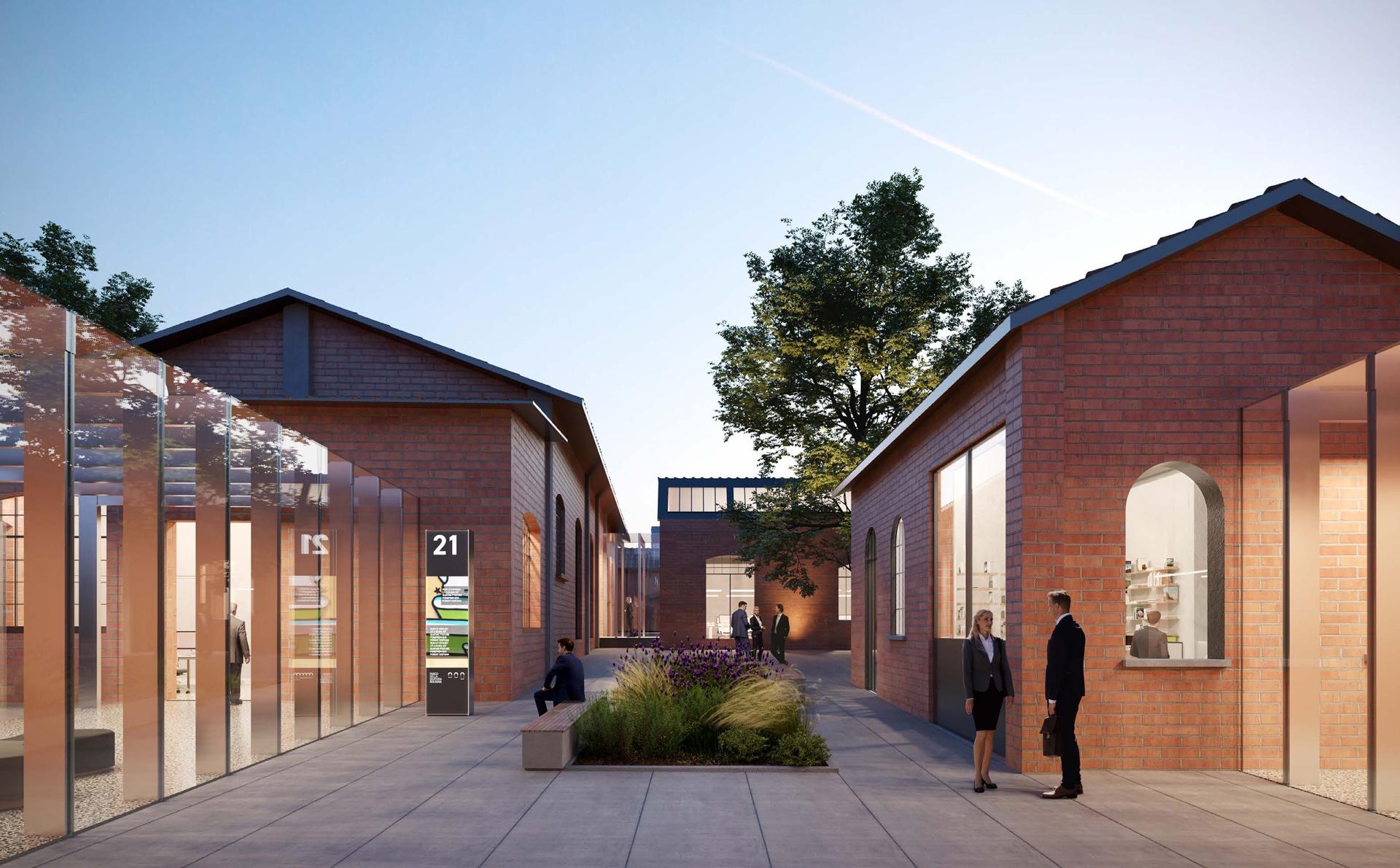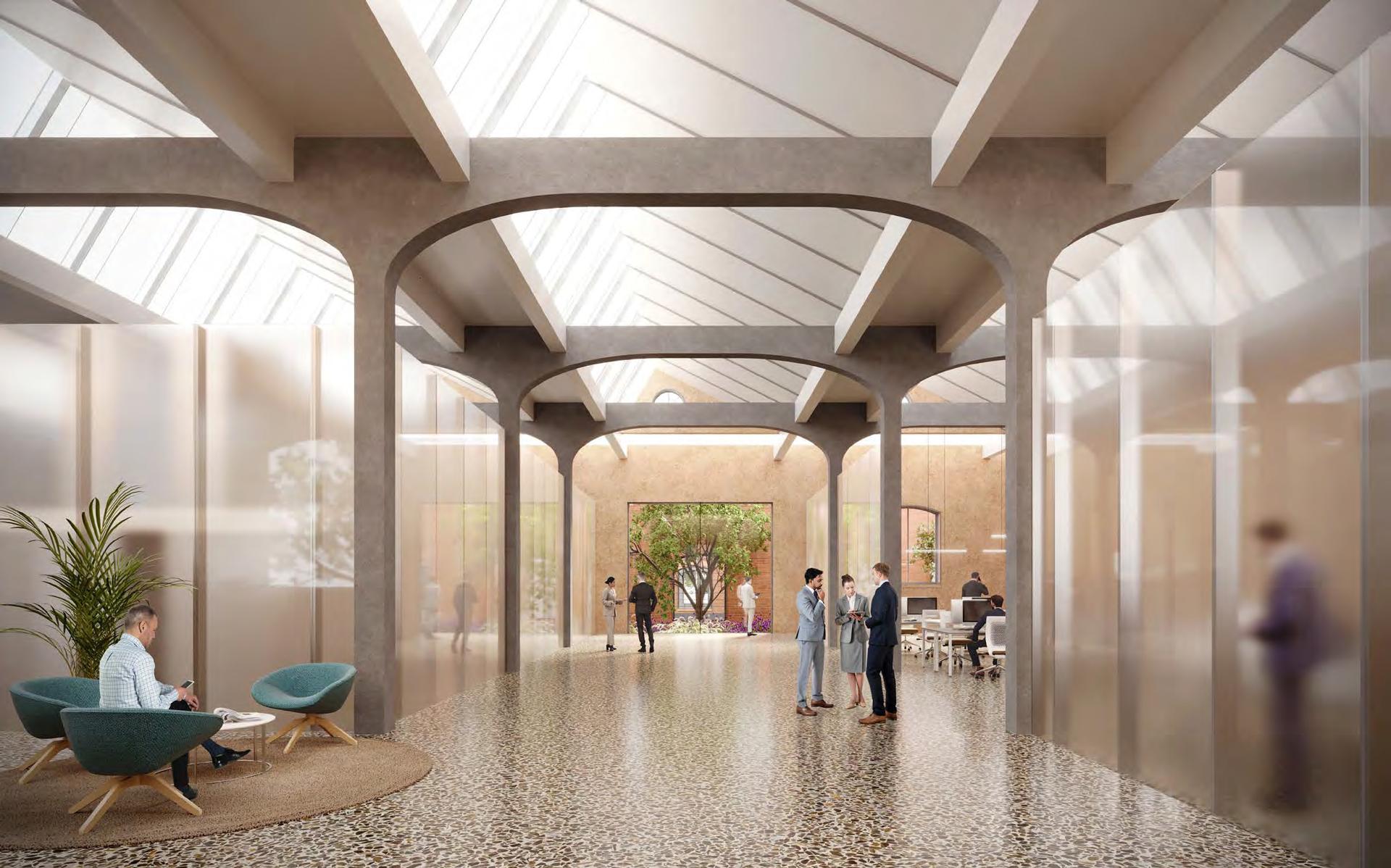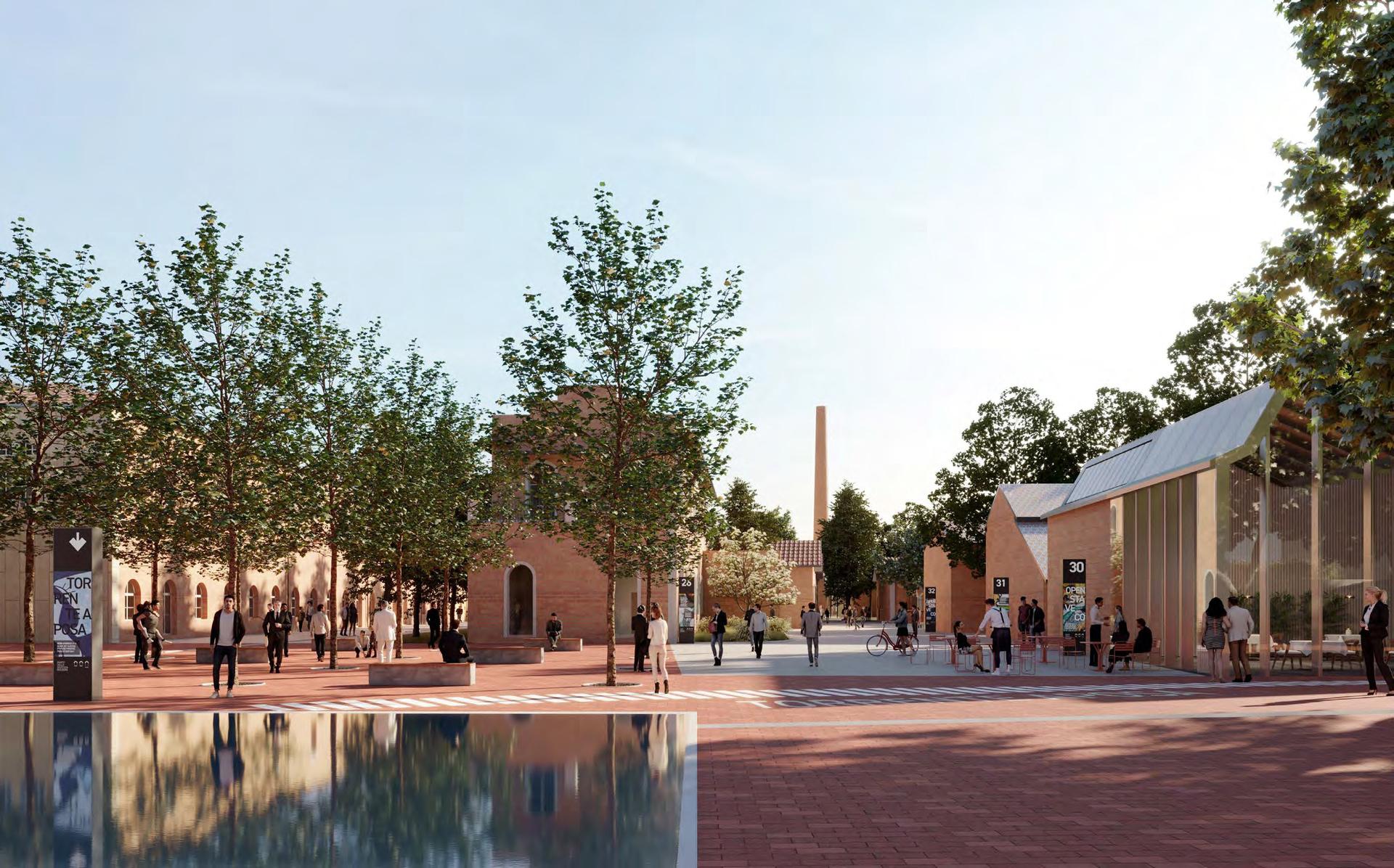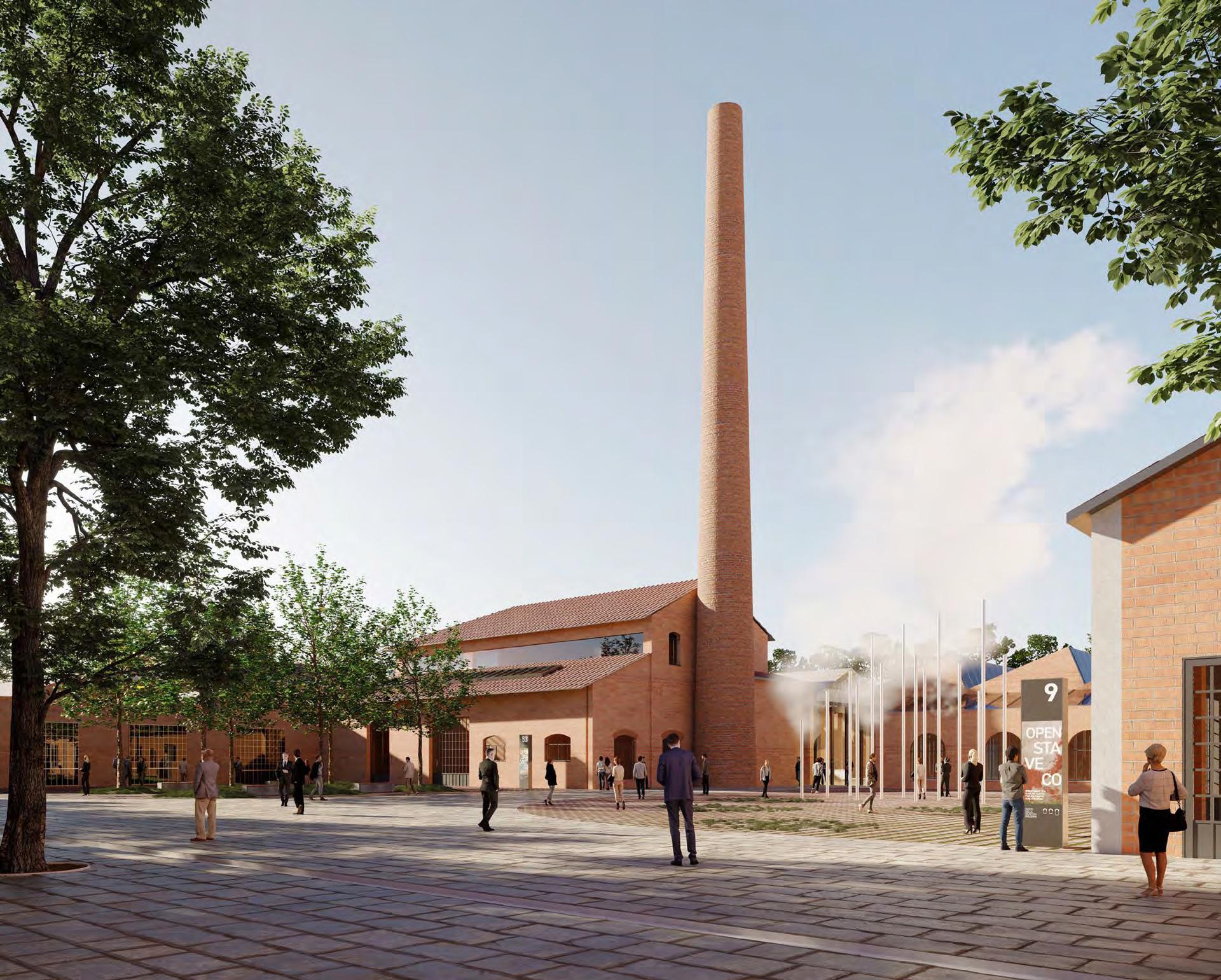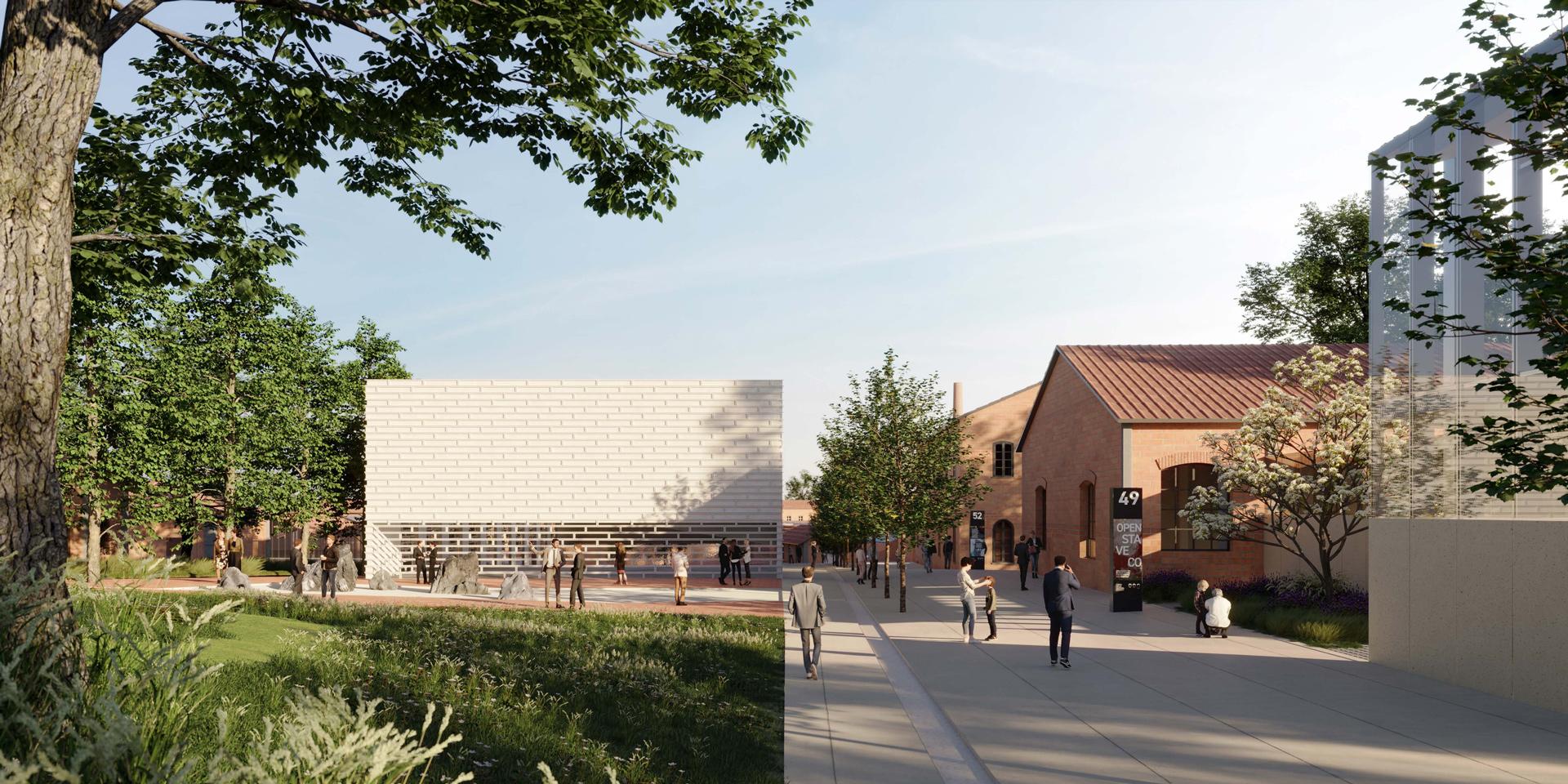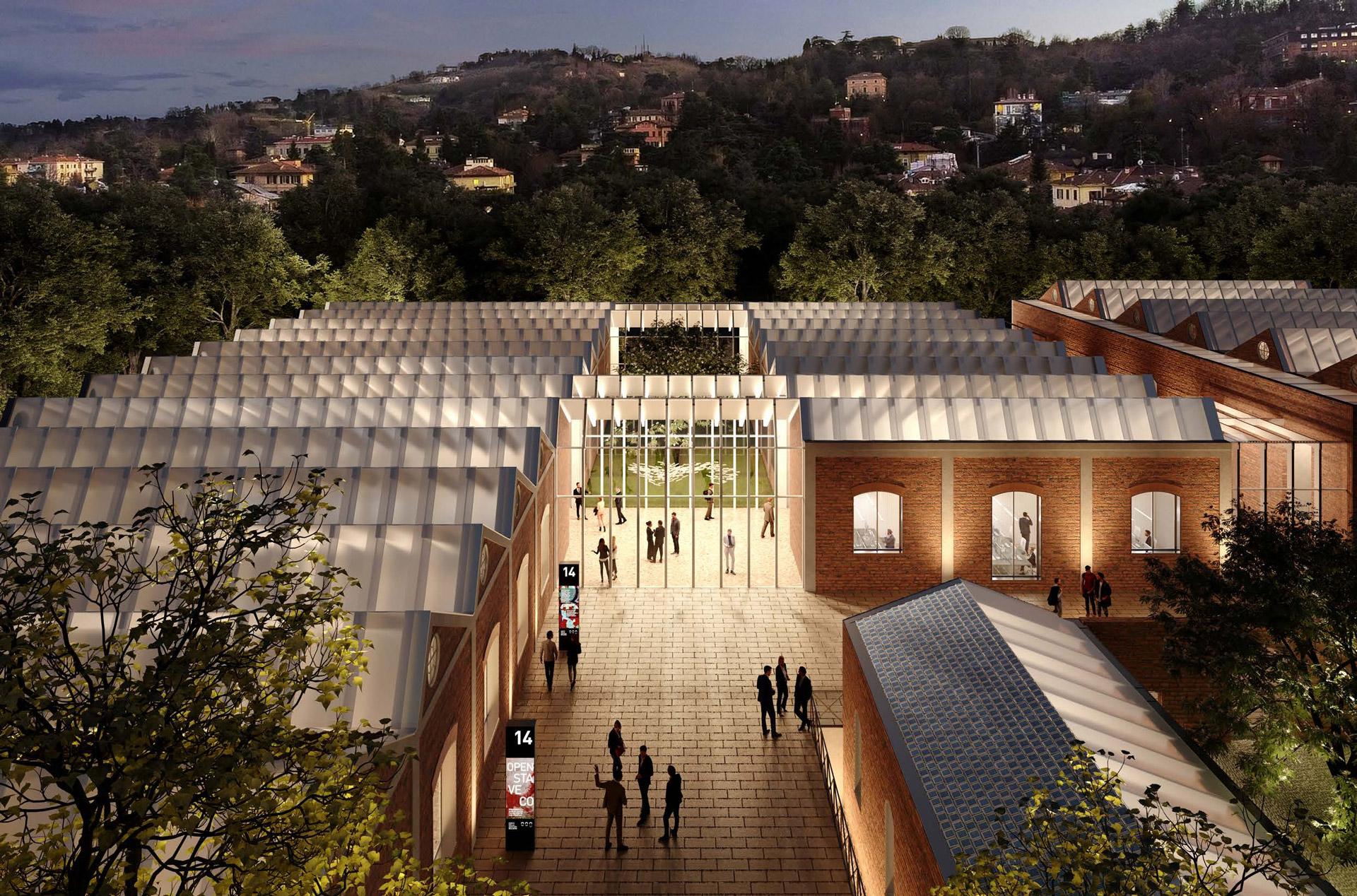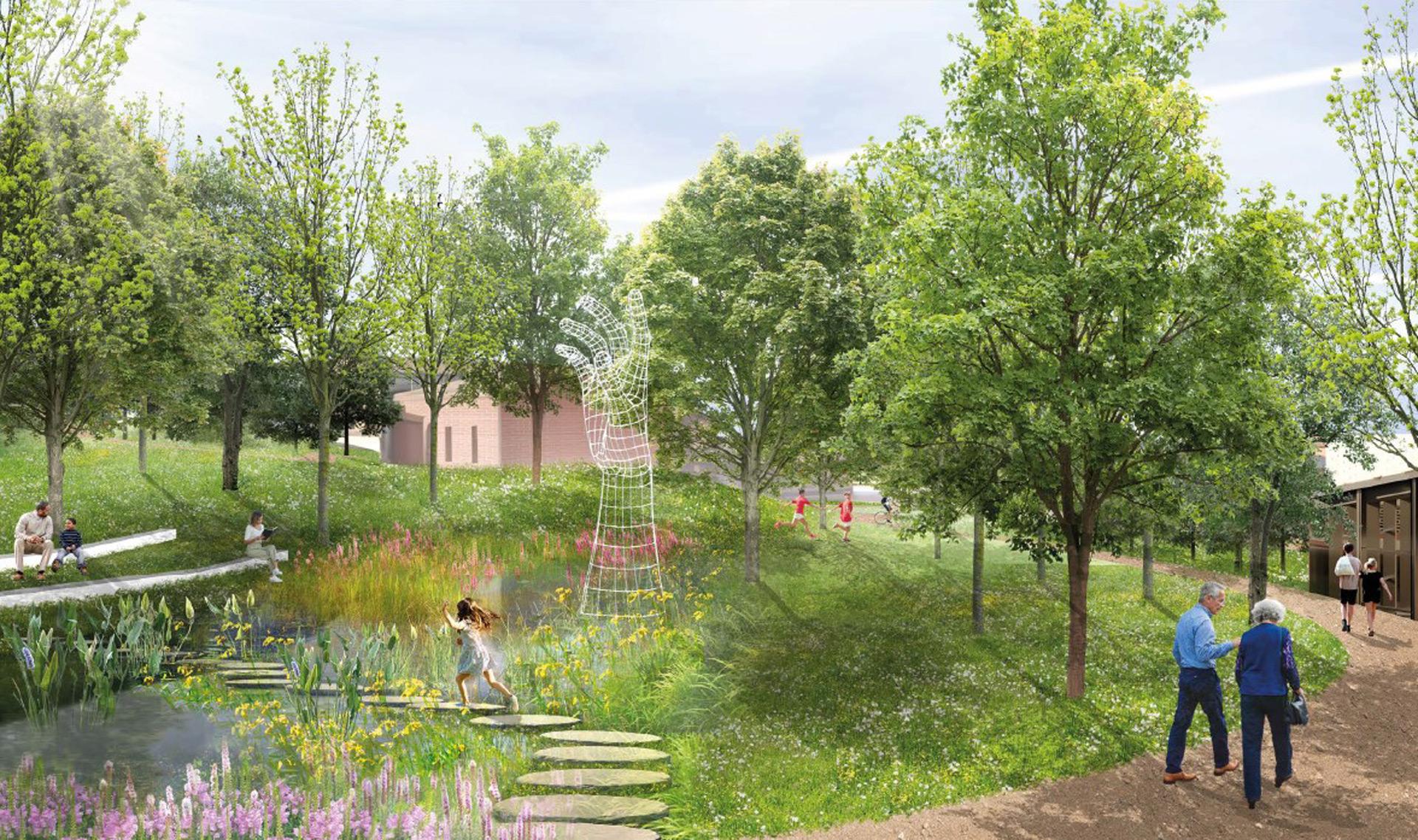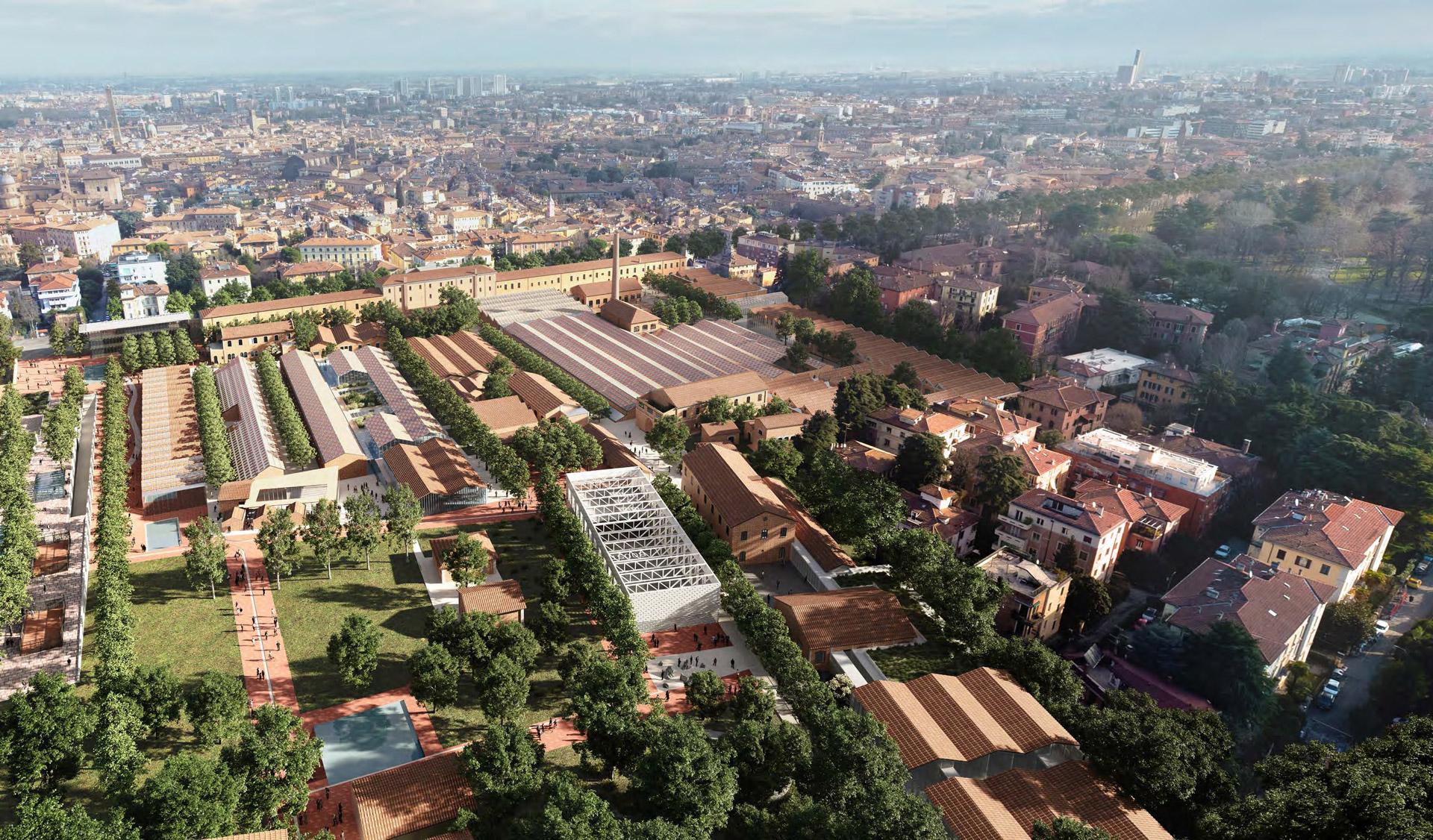urban center for sharing new values
The competition entry for the new courthouse offices in Bologna in the former STA.VE.CO area represents a new “Restored Landscape”: it comprises a mix of historical architecture and contemporary buildings, and extensive rediscovered green areas. Buildings in good condition are restored, while for others, the ‘box within a box’ principle is applied: the conservation of the restored and renovated external walls is associated with a new structure and envelope. To enhance the original industrial architecture and respect sustainability standards, lightweight and simple metal structures have been chosen, allowing for a different future use of the buildings.
The new urban park, instead, connects the historic center with the hills, giving Bologna a vast green space, increasing urban biodiversity, and reconnecting people with the natural system. Water squares have been designed to manage rainfall and to offer new habitat for local flora and fauna, increasing the ecological value of the landscape. The interiors are developed as functional and flexible spaces, according to the principles of the “Agile Office” that allows for the complete reconfiguration of workstations and shared spaces, offering an infrastructure for individual, collaborative, and support work modes. The proposed project combines the needs of people and a wide range of naturalistic morphologies in a sequence of internal and external areas, new bright spaces and recovered historical spaces that connect with the surrounding environment, following an application of biophilic design principles.
